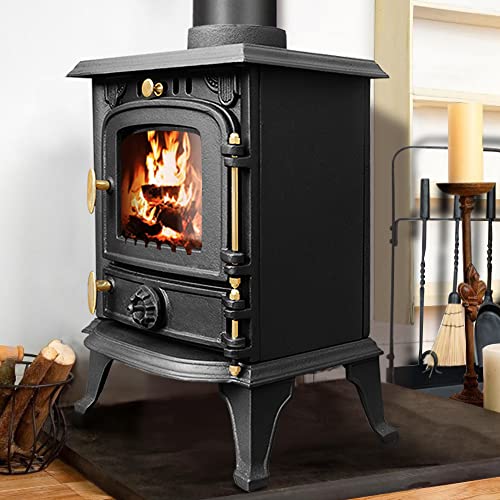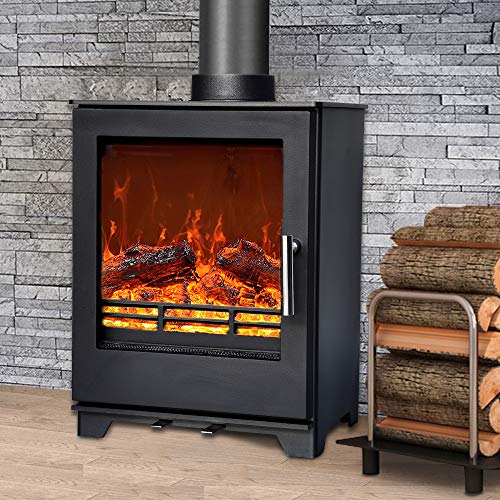The Ultimate Glossary Of Terms About Wood Burning Stove
작성자 정보
- Retha 작성
- 작성일
본문
Wood Burning Stoves Near Me
Wood stoves can help you save money on your energy bills. They also help to support active woodland management, which is beneficial to wildlife.
If they are not installed and maintained correctly they may release carbon monoxide, which can pose health risks for the entire family. To prevent this, look for an EPA-certified wood stove equipped with modern technology to ensure safe operation.
Catalytic Stoves
A catalytic stove comes with an encapsulated catalyst that converts the smoke from wood into carbon dioxide and water. This is a fantastic option for those who want to cut down on indoor air pollution and save money. They consume less multi fuel stoves for sale, burn hotter, and produce less creosote. However, they can be more expensive to operate than non-catalytic models, fire stove and require regular maintenance of the combustion chamber.
Wood Stoves that have been certified by the EPA
The EPA requires wood stoves to be constructed in accordance with certain guidelines that limit their emissions. According to these guidelines a catalytic stove must not emit more than 7.5 grams per hour. This is in comparison to 4.1 g/hr of smoke for a non catalytic stove. It is important to keep in mind that lower emission ratings don't necessarily translate into greater heating efficiency.
Sizing and Selection
It is very important to ensure that your wood stove is designed for the space in which it will be installed. The wrong sized stove will not function as it was intended and may even overheat. A properly sized stove will increase the heat output while reducing emissions. The brochure: Buying an certified wood stove that is EPA-certified (PDF 530K), provides a convenient method to determine the size and type of the best wood stove.
 Non-Catalytical and Catalytic stoves
Non-Catalytical and Catalytic stoves
The first type of wood stove manufactured was the non-catalytic stove. These stoves are also called traditional wood-burning stoves, or open fire Stove stoves. The non-catalytic stove is advantageous in that it doesn't require another combustion to lower emissions. Smoke is the primary source of energy wasted. The smoke that is produced by a wood stove that is not catalytic has a heavy residue called creosote, which is a highly toxic substance. The catalytic wood heater has reduced the risks. The catalytic wood electric stove fire utilizes catalysts to burn the smoke containing gases and eliminates the toxic creosote.
The catalytic wood burning device was created to lower the emission of toxic gases. However, fire stove it is less effective than the secondary combustion system that is used in the non-catalytic model. The catalyst does not completely burn the byproducts from log burning stoves wood and therefore still emits harmful fumes. The honeycomb structure may be damaged over time. This can result in decreased performance and a need for replacement.
Cleaning the Combustion Chamber Clean
A catalytic combustor that is operating properly will appear as a grayish powder. It should be free of soot, ash or any other material that could clog the catalytic surfaces and decrease their surface area. The combustor shouldn't be exposed to flame impingement. This can happen when a strong, rapid draft draws flames directly into a catalytic convertor. This could also occur if you open the firebox or the ash pan doors open.
 It is essential to check the combustion chamber of the catalytic catalytic for physical damage or the need to replace. If it is damaged or requires replacement, it must be done as soon as possible to ensure the stove's optimal performance.
It is essential to check the combustion chamber of the catalytic catalytic for physical damage or the need to replace. If it is damaged or requires replacement, it must be done as soon as possible to ensure the stove's optimal performance.
Wood stoves can help you save money on your energy bills. They also help to support active woodland management, which is beneficial to wildlife.
If they are not installed and maintained correctly they may release carbon monoxide, which can pose health risks for the entire family. To prevent this, look for an EPA-certified wood stove equipped with modern technology to ensure safe operation.
Catalytic Stoves
A catalytic stove comes with an encapsulated catalyst that converts the smoke from wood into carbon dioxide and water. This is a fantastic option for those who want to cut down on indoor air pollution and save money. They consume less multi fuel stoves for sale, burn hotter, and produce less creosote. However, they can be more expensive to operate than non-catalytic models, fire stove and require regular maintenance of the combustion chamber.
Wood Stoves that have been certified by the EPA
The EPA requires wood stoves to be constructed in accordance with certain guidelines that limit their emissions. According to these guidelines a catalytic stove must not emit more than 7.5 grams per hour. This is in comparison to 4.1 g/hr of smoke for a non catalytic stove. It is important to keep in mind that lower emission ratings don't necessarily translate into greater heating efficiency.
Sizing and Selection
It is very important to ensure that your wood stove is designed for the space in which it will be installed. The wrong sized stove will not function as it was intended and may even overheat. A properly sized stove will increase the heat output while reducing emissions. The brochure: Buying an certified wood stove that is EPA-certified (PDF 530K), provides a convenient method to determine the size and type of the best wood stove.
 Non-Catalytical and Catalytic stoves
Non-Catalytical and Catalytic stovesThe first type of wood stove manufactured was the non-catalytic stove. These stoves are also called traditional wood-burning stoves, or open fire Stove stoves. The non-catalytic stove is advantageous in that it doesn't require another combustion to lower emissions. Smoke is the primary source of energy wasted. The smoke that is produced by a wood stove that is not catalytic has a heavy residue called creosote, which is a highly toxic substance. The catalytic wood heater has reduced the risks. The catalytic wood electric stove fire utilizes catalysts to burn the smoke containing gases and eliminates the toxic creosote.
The catalytic wood burning device was created to lower the emission of toxic gases. However, fire stove it is less effective than the secondary combustion system that is used in the non-catalytic model. The catalyst does not completely burn the byproducts from log burning stoves wood and therefore still emits harmful fumes. The honeycomb structure may be damaged over time. This can result in decreased performance and a need for replacement.
Cleaning the Combustion Chamber Clean
A catalytic combustor that is operating properly will appear as a grayish powder. It should be free of soot, ash or any other material that could clog the catalytic surfaces and decrease their surface area. The combustor shouldn't be exposed to flame impingement. This can happen when a strong, rapid draft draws flames directly into a catalytic convertor. This could also occur if you open the firebox or the ash pan doors open.
 It is essential to check the combustion chamber of the catalytic catalytic for physical damage or the need to replace. If it is damaged or requires replacement, it must be done as soon as possible to ensure the stove's optimal performance.
It is essential to check the combustion chamber of the catalytic catalytic for physical damage or the need to replace. If it is damaged or requires replacement, it must be done as soon as possible to ensure the stove's optimal performance. 관련자료
-
이전
-
다음
댓글 0
등록된 댓글이 없습니다.
.png)






